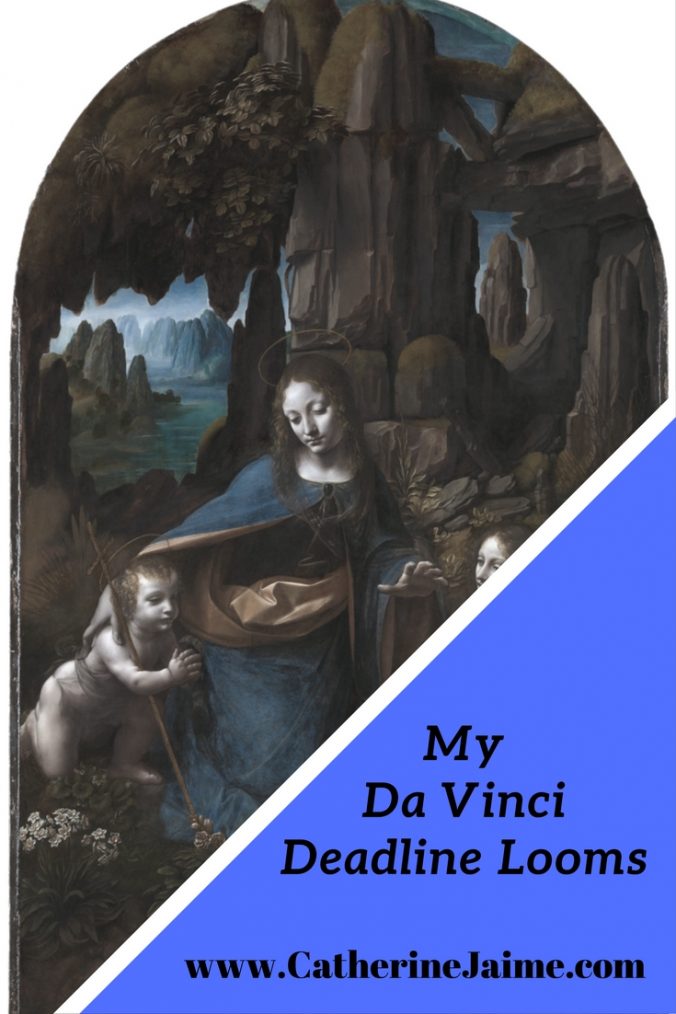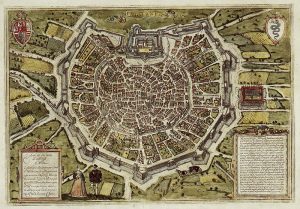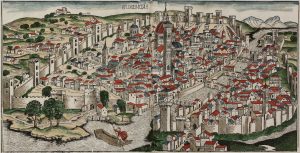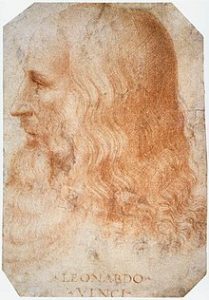The writing continues as I press ahead to finish the rough draft of my next da Vinci novel. As I mentioned in a post in mid-October, my new goal for finishing this rough draft is the end of November. I’m not quite at the end of the story, or at the end of the month, so the race is on.
Enjoying the Research
As always, it is easy to get caught up in the research. Learning new things about Leonardo and the era and areas in which he lived is always fascinating to me.
This particular novel covers the period in time when he is back and forth between Florence and Milan several times. Those are both cities that I have entire books set in, since in earlier periods of his life, he spent many years at a time in each of them.
Needless to say, I’ve already studied Renaissance Florence and Renaissance Milan quite a bit. But that never stops me from further studying.
Renaissance Milan
Some of the things I learned recently about Milan:
- It was larger and richer than Florence during the Reniassance.
- It was the gateway between the Italian peninsula and Northern Europe, particularly France and Germany.
- Milanese armorers were so important to Milan that they had special privileges, much like the glassmakers of Venice.
- It was the first region in western Europe to build navigable canals
Renaissance Florence
Florence on the other hand had these qualities at that time:
- A large industrial city with much trade and manufacturing
- The guilds there were particularly important, and each had their own officers and their own churches.
- The top 7 guilds there were: bankers, druggists, furriers, notaries, silk weavers, and wool merchants.
- In fact, the quality of wool in Florence was the highest in Europe.
- Other important guilds in Florence included: bakers, blacksmiths, carpenters, innkeepers, grocers, and shoemakers (and 8 others).
- Florence spent much of this time period (actually from 1498 – 1509) fighting their neighbors, the Pisans.
- The oldest bridge across the Arno River, the Ponte Vecchio, was crowded with shops, including butchers and tanners.
Leonardo, our Renaissance Man
And, of course, I’ve continued learning about Leonardo’s life during this time period. Some of the following may or may not make it into this novel, but they were interesting tidbits, nonetheless.
- When Leonardo left Florence in the summer of 1506 with his battle painting incomplete, the Signoria (City Fathers) required him to leave 150 florins – money he would lose if he didn’t return from Milan by the end of the three months they were giving him.
- In July 1507 King Louis referred to Leonardo as “our dear and good friend, our painter and engineer.”
- Sometime in 1507 Leonardo started his painting, the St. Anne Madonna, and he completed it sometime in 1508.
Preview from the Draft Below
For any who are interested, I’ve included a preview from the current version of my story, where Leonardo gets the message that he needs to leave Florence and head to Milan.
Happy writing and reading!
Cathy
As Leonardo took the message the servant stood straight again. “I have been instructed to wait for a response. I actually bring you two messages that are somewhat connected to each other. The first is that the friars at the Chapel of the Franciscan Brotherhood are unhappy about an altarpiece that you did for them with the de Predis brothers. They are requesting that Governor d’Amboise require you to come back to Milan and complete the altarpiece to their satisfaction.”
The servant stopped, looking for a response from Leonardo. But Leonardo merely stood there, considering the implications of this message. The altarpiece in question had been his first commission in Milan. A commission that went back more than twenty years. He had not thought about the Madonna of the Rocks in years. But he had completed that painting. Why were the friars bringing up it after so long?
Leonardo thought about the money the three artists had been promised for completing the altarpiece. Now that he stopped to think about it, he wasn’t sure whether they had ever been paid in full. He had started working for the Duke of Milan soon after they had completed the altarpiece and he had left the final financial details with the brothers. Suddenly Leonardo realized that the French servant was standing silently in front of him, as if waiting for Leonardo’s full attention to deliver the rest of his message.
“I’m sorry,” Leonardo mumbled. “I was thinking about the altarpiece. Did you say there was a second part to your message?”
The servant smiled and continued, “Governor d’Amboise requests your presence at his Milanese court.”









Leave a Reply